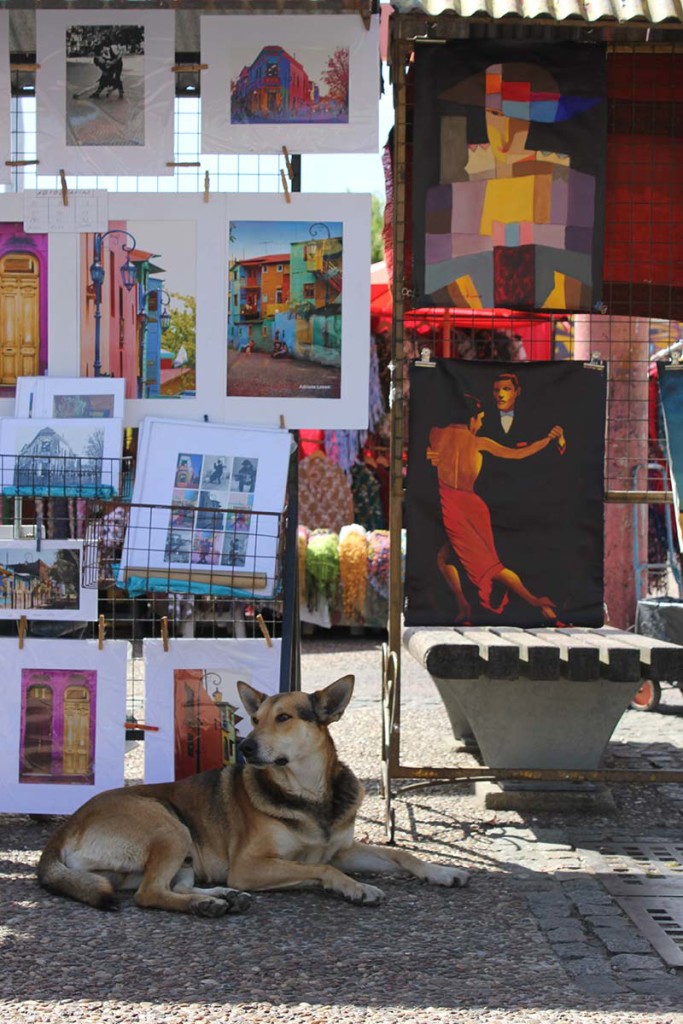
In November I was taken on a press trip by Wines of Argentina. Lucky, lucky me. Over the course of six days I would explore a country I’d been lusting over for years, meet some lovely fellow journalists and wine folk, and drink more Malbec than a City boy with a drink problem. The overriding impression after days of visits to wineries in Mendoza (where 70% of the country’s wine production occurs), Salta and Cafayate was one of a wine industry populated by incredibly passionate winemakers, producing wines of excellent quality, value and unique character, thanks to the country’s widely ranging climates and terroirs. And while almost all of the producers we met were keen to show us their Malbecs – this is, after all, the Argentinian wine – we discovered that there is so much more to the region, tasting some excellent Pinot Noirs, fragrant Torrontes and Viogniers.

We saw small-scale, family-owned operations like Hacienda Del Plata (above), which produces just 55,000 bottles a year and is run by the Gonzalez family, who siphoned some of their spicy 100% Malbec straight out of the American oak barrel for us.

And we dipped into the biodynamic winemaking movement at the beautifully wild Krontiras vineyard, where whole hedgerows of overgrown rose bushes flank the 110 year-old vines. Here we drank chilled, surprising fresh Malbec from this year’s harvest.
But we also visited wine making giants like Clos de los Siete, a collection of five state-of-the-art wineries (one of which belongs to Benjamin de Rothschild) overseen by lauded wine consultant Michel Rolland, where visitors can hire horses to wander through the vines and eat gourmet fare in its restaurants.

At the Dutch-owned Salentein, also in the Uco Valley, we were amazed by the imposing architecture of the winery – with its vast glass and concrete structure that looks, from the outside, like some kind of sinister Bond villain’s lair. Inside, a cavernous sunken wine room is filled with oak barrels, with a grand piano in the centre of the room – an indication of this producer’s dedication to the arts. Salentein has its own gallery showcasing some of Argentina’s finest artists alongside a small Dutch collection.

I will be writing about the wine makers we visited in more detail next year for Waitrose Kitchen magazine – so keep an eye out for that.
And what of the food!? We sampled everything from chic, high-end restaurant cuisine – which in Buenos Aires and Mendoza competed with anything you might find in New York or London. Ingredients were often hyper-local and restaurant repertoires usually drew heavily from Mediterranean techniques and flavours, while the more rustic, traditional meals we had were astounding in their simplicity. We tried empanadas of all shapes, sizes and fillings, because recipes for the speciality – which has its origins in Moorish cuisine – are fiercely regional. In the Uco Valley we learned how to make them according to the Mendozian method, and I’ll be putting up a recipe soon – but my particular favourite was one filled with a gooey, peppery morcilla (Argentinian blood sausage) that we ate during a tasting with Argento Wines.

Obviously there was a large amount of insanely tasty cow involved on the trip – though I got the feeling many of our hosts assumed we’d been bombarded with steak and gave us alternatives, so plenty of pork, deer and veal were consumed too.

Not to mention asado – the traditional Argentinian barbecue whereby different cuts of meat and sausages are slowly roasted over glowing charcoal – never a direct flame – giving them the most delicious and intense flavour. If you’re lucky, desserts will involve some form of dulce de leche – the insanely moreish sweet delicacy of sticky milk caramel.
Coffee is also done incredibly well here, and in Buenos Aires, which was ablaze with violet jacaranda trees when we visited, we ventured to Cafe Tortoni, one of the city’s oldest, and best-loved coffee houses (there was a queue when we arrived), for a restorative caffeine fix.

I went for an iced cappucino, which was thick, cool and sweet and flavoured with orange and cinnamon:

At Casa Cruz restaurant in the plush Palermo neighbourhood of the city, we feasted on tomato tatin stuffed with a rich goats cheese, onion and herb filling, followed by white salmon wrapped in an almost-caramelised ham served on deep, smoky lentils.

Our first really traditional meal of empanadas and asado came at the beautiful House of Jasmines hotel, a boutique Relais and Chateaux property in Salta – which – get this, used to belong to Robert “I love the smell of napalm in the morning” Duvall.



The meat just kept coming! And that is pretty much the story of eating in Argentina. When we drove through the little remote villages on the beautiful drive from from Salta to Cafayate, we were amazed by how many butchers each one had – every other building seemed to be advertising meat or chicken (or, more incongruously, Coca Cola) – because this is what their diet consists of. And they waste nothing. Offal, charcuterie and blood sausage ensure there’s no such thing as meat monotony. You’ll find it hard if you don’t eat animals, but if you do, expect to taste some of the best meat you’ve ever had. And surely there are few things better than eating wonderfully free range meat, washed down with interesting, well-made wines against a backdrop of astounding natural beauty?

